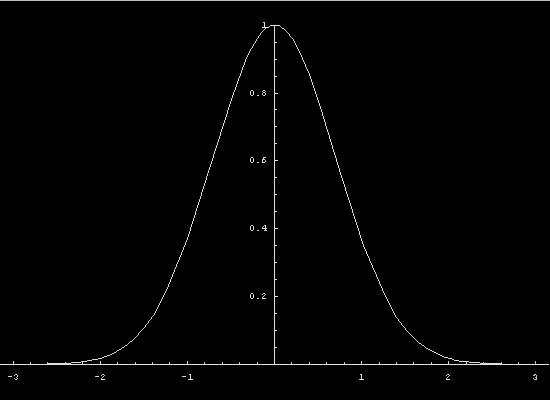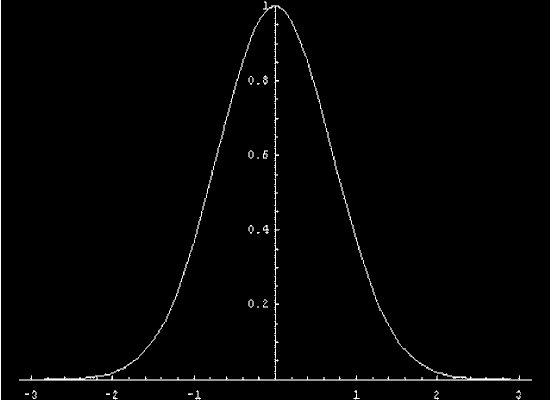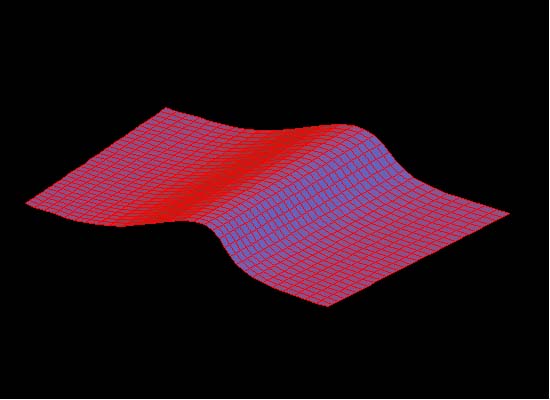*if the proportions
of this page seem off, try refreshing.
Weeks
(-Infinity,0)
Recall that in ordinary differential equations (ODEs) we study how
systems evolve if we specify initial conditions and/or boundary values.
These are useful in studying natural phenomena as well as theoretical
hypotheses. Qualitatively we can study the general behavior of solutions
given varying initial conditions. Numerically or analytically, we
can solve systems of ordinary differential equations.
The study of partial differential equations (PDEs) is similar to
that of ODEs. In both cases, we specify initial conditions and watch
the evolution throughout time. The distinction lies in the use of
partial derivatives of multiple variables as opposed to full derivatives
of a single variable. In our study the partial derivates are taken
with respect to space and time, x and t. Changes of coordinates are
often made to simplify and decouple the systems of PDEs.
Many introductory physics textbooks define a wave as a disturbance
that transports matter or energy. These disturbances are ubiquitous
in science and are the focus of our study. Waves can be studied mathematically.
They arise in the solutions of differential equations. Waves have
many manifestations depending on how the system is interpreted.
While we study many different physical and
non-physical systems, each of these systems has the same basic
template. Ut+F(U)x=0 (subscripts are partial derivatives). This
is called the “conservation form” of a conservation law.
If U is a scalar then it is called the “state variable”.
If U is a vector then the components of U are the state variables.
F is called the "flux function".
One of the fundamental concepts in our research
is to examine the evolution of a state variable in space through
time, or in spacetime.
Waves are shown below in what is called the “phase plane”.
The vertical coordinate is time (t); the horizontal, space (x). The
state variable is implicitly a third dimension.
The lines shown above are “characteristic
curves”. Characteristics
are defined so that the state variable is constant on the curve.
They are analogous to level curves of three dimensional graphs. They
are the fixed point solutions of a series of ordinary differential
equations. The places
where the lines fan out as t increases are called "rarefractions." The places where the lines converge are called "compressions."
In the scalar case we rewrite our template
as Ut+Fu*Ux=0. This is called “quasi-linear form.” We
imagine a curve C in the phase plane whose derivative with respect
to time is equal to Fu.
Integrating and noting that Fu is constant with respect to time we
find that C-Cinitial=Fu*t
Using this result, we can make the computer
draw each characteristic separately and recombine them to form
the above pictures. See the
Characteristic Plotter
program.
Another way to examine a wave is to look at
profiles in time. We start with an initial profile and specify
the differential equation
that the system obeys. The profile changes as time passes. When the
system is “linear,” the profile shifts undistorted at
a fixed speed.

In the nonlinear case, different values of
the state variable propagate at different speed and the profile
warps. The
following movie was created with the help of the mathematica
program, shockprofiles. 
Note that on the phase plane diagrams there
exist points where multiple characteristics meet. This does
not mean that all characteristics have the same value;
it denotes the place where the solution becomes multiple valued.
Sometimes a multiple valued solution is desirable. In other cases,
multiple states can have no physical interpretation. In these cases, "shockwaves" form.
There is a method called the "equal area law" that determines
where the discontinuity should be located. See below.

|

